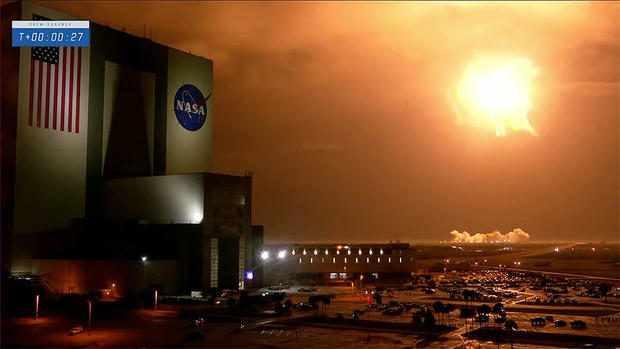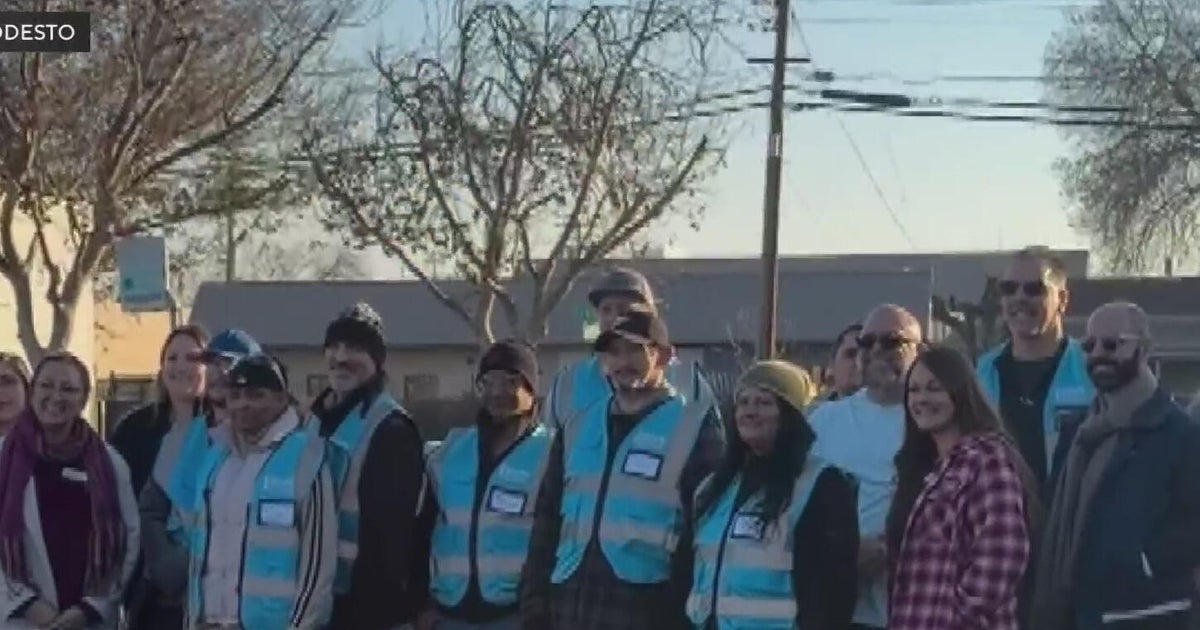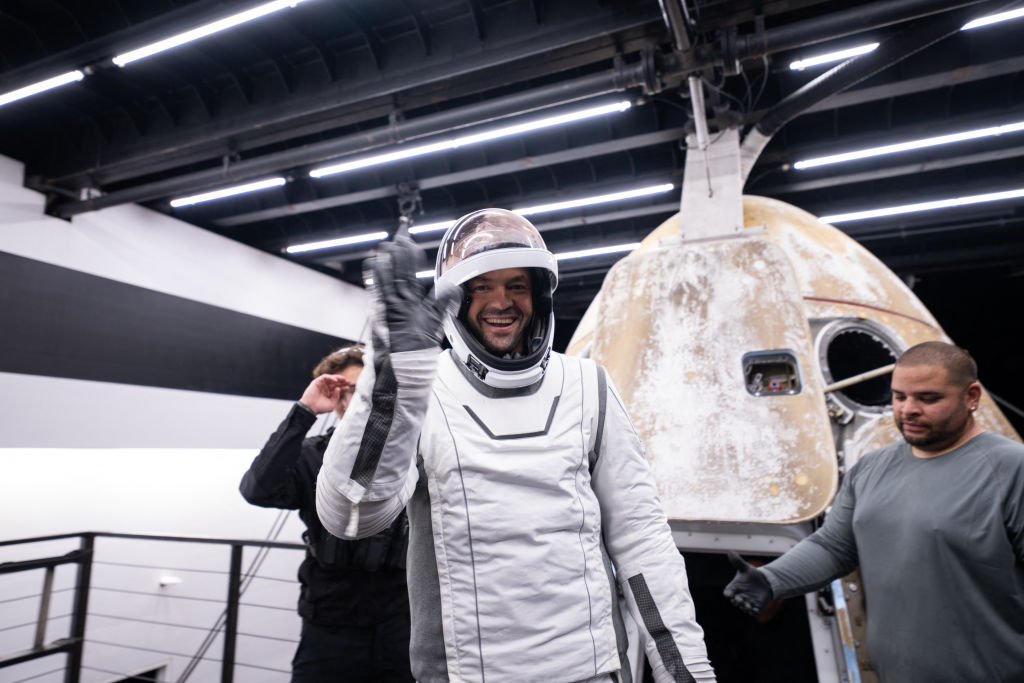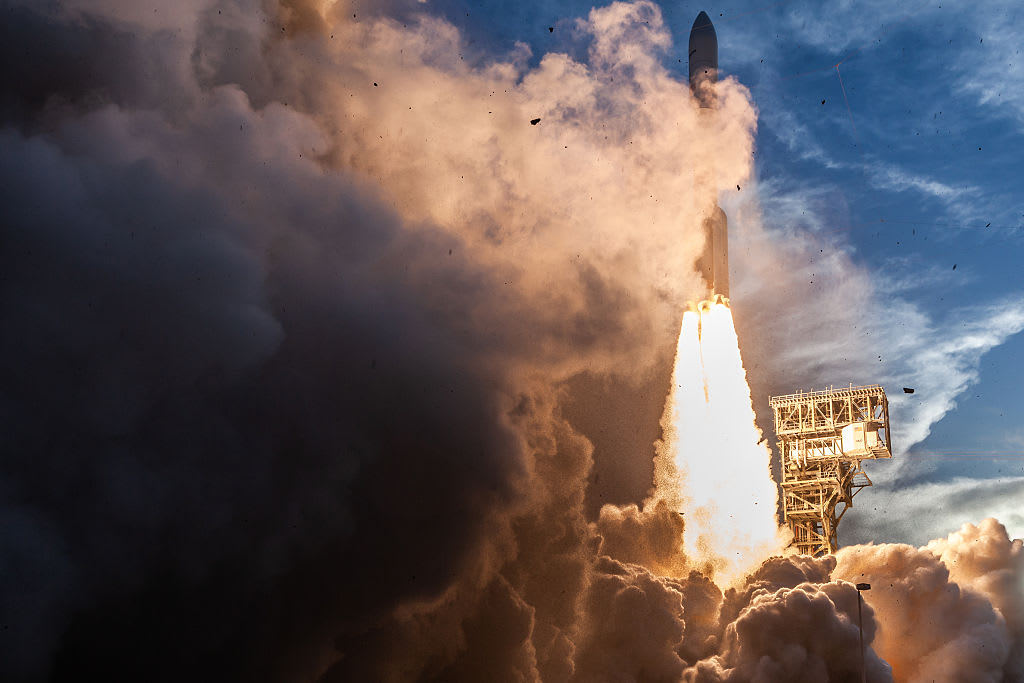SpaceX Crew Dragon astronauts launch to begin a busy six months in space
Four astronauts rocketed into orbit aboard a SpaceX Crew Dragon capsule Wednesday, kicking off a 22-hour rendezvous with the International Space Station. The launch comes just two days after the crew they are replacing returned to Earth to close out the longest piloted mission in American space history.
Strapped into the Crew Dragon "Endurance," commander Raja Chari, co-pilot Thomas Marshburn, Kayla Barron and European Space Agency astronaut Matthias Maurer blasted off from pad 39A at the Kennedy Space Center at 9:03 p.m. ET, climbing away atop a SpaceX Falcon 9 rocket using a previously flown first stage.
Arcing over on a northeasterly trajectory paralleling the East Coast, the booster put on a spectacular show, knifing through low clouds and lighting them from above as it quickly climbed away on 1.7 million pounds of thrust.
Two-and-a-half minutes later, after propelling the rocket out of the dense lower atmosphere, the nine engines powering the first stage shut down, the stage fell away and the flight to orbit continued using a single vacuum-rated engine powering the rocket's second stage.
The first stage, meanwhile, flipped around to put its engines in the direction of travel and plunged back to Earth, landing on an off-shore droneship nine minutes after launch. It was SpaceX's 93rd booster recovery, and its 70th at sea.
Three minutes later, the second stage shut down, putting the spacecraft in orbit and three minutes after that, the Crew Dragon was released to fly on its own.
"On behalf of the SpaceX launch and recovery teams, it was a pleasure to be part of this mission with you," the SpaceX launch director radioed. "Enjoy your holidays amongst the stars, we'll be waving as you fly by. Cheers."
"Thanks. It was a great ride, better than we imagined," Chari replied from orbit.
A former F-35 test pilot and Air Force combat veteran, Chari will monitor the Crew Dragon's automated 22-hour rendezvous with the space station, approaching from behind and below before moving in for docking at the forward port of the lab's Harmony module around 7:10 p.m. Thursday.
Welcoming their new crewmates aboard the station will be Soyuz MS-19/65S commander Anton Shkaplerov, cosmonaut Pyotr Dubrov and NASA astronaut Mark Vande Hei, who celebrated his 55th birthday Tuesday. Dubrov and Vande Hei, launched to the station on April 9, plan to return to Earth on March 30, logging nearly a full year — 355 days — in space.
Chari, Marshburn, Barron and Maurer plan to remain aboard the station until late April, handing off to another four astronauts riding up on another new Crew Dragon, the fourth in SpaceX's inventory. The planned duration of the Crew-3 flight is nearly 166 days.
The return of Crew-2 and the launch of Crew-3 comes amid a flurry of short-duration commercial space flights ranging from the all-civilian Inspiration4 charity mission to low-Earth orbit in September to a 12-day stay on the space station by a Russian actress and film director last month.
The Crew-3 flight will be followed by a space station visit in December by a Japanese billionaire and his assistant riding a Russian Soyuz spacecraft, followed by another Crew Dragon flight in February carrying four civilians to the space station for a 10-day visit.
Aside from the commercial missions, a new Russian module is expected to arrive at the station the day after Thanksgiving, and Marshburn and Barron plan a spacewalk the following week to replace an external antenna. More spacewalks are planned early next year to continue upgrading the station's solar power system.
"We really feel super lucky to be at NASA at such an exciting time," said Barron, a Naval Academy graduate and one of the first women to serve aboard a nuclear submarine.
"We're really at the dawn of this new era where we have commercial space flight partners who are flying human beings to low-Earth orbit, who are partnering with us and getting ready to kind of take it over so we can focus on exploration, going to the moon so that we can learn how to go to Mars."
On a more personal level, "this will actually be the first rocket launch I've seen in person," she told reporters later, "and I'll be in the capsule on the top of it. So I'm really excited for the whole experience."
Going into the flight, just 598 individuals had flown in space, including Marshburn. Chari and Marshburn were both seated just ahead of Barron and Maurer in the Crew Dragon, so Chari became the 599th person to reach space. By luck of the draw, Maurer, designated mission specialist No. 1, will be listed as the 600th and Barron, MS-2, the 601st.
The Crew-3 astronauts originally planned to launch October 31, but the flight was delayed by bad weather in the downrange abort landing zone and then by an unspecified "minor medical issue" with one of the four astronauts.
The flight was delayed again by bad weather and yet again when NASA decided to bring Crew-2 astronauts Shane Kimbrough, Megan McArthur, ESA astronaut Thomas Pesquet and Japanese astronaut Akihiko Hoshide back to Earth on Monday.
NASA prefers to launch fresh station crew members while the departing crew is still aboard, allowing the outgoing astronauts to brief their replacements, face to face, on the ins and outs of station operations.
But given the weather and the medical issue with Crew-3, NASA opted instead to press ahead with Crew-2's return to Earth first, in part to take advantage of good weather in the Gulf of Mexico splashdown zone and because the Crew-2 Dragon capsule was nearing its 210-day on-orbit certification limit.
The re-entry and descent to splashdown went off without a hitch, but one of the capsule's four main parachutes took 75 seconds longer to inflate than the other three. Engineers recovered the chute and carried out a detailed inspection, but no problems were found and managers cleared the Crew-3 Dragon for launch.








